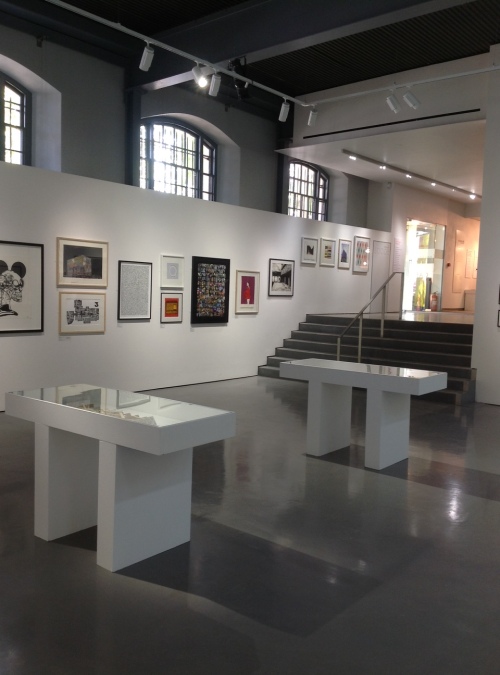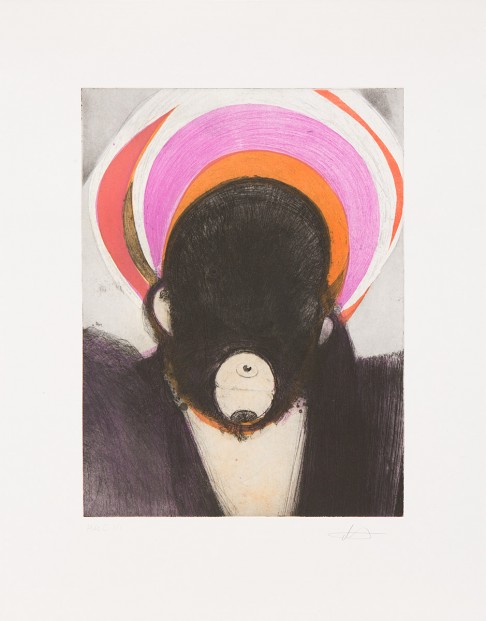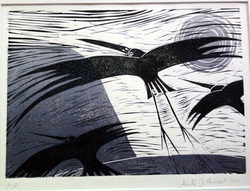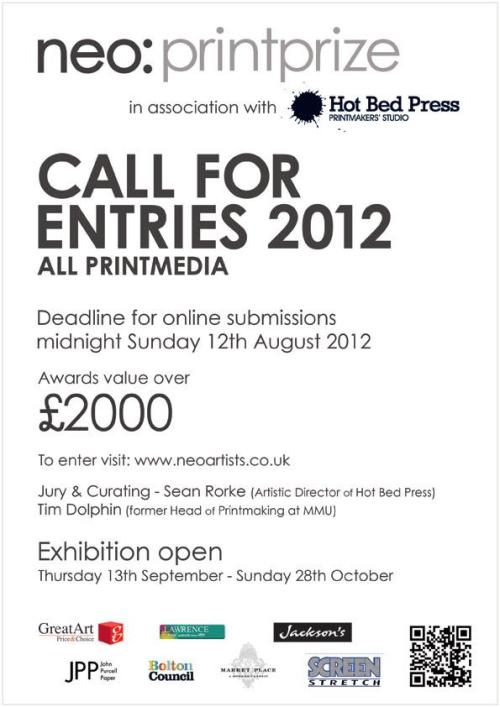RELIEF PRINTING
Ink is rolled, dabbed or painted on the surface of the block, which is then printed manually or by printing press.
Linocut, Woodcut and Wood Engraving
An image is cut into a flat surface of lino or wood using sharp tools. A thin layer of printing ink is then applied to the raised (or uncut) surface and the image printed by hand burnishing or with a printing press.
Reduction printing is a way of making a multi-colour print from one block, which is cut, inked and printed over several successive stages.
INTAGLIO PRINTING
Ink is pushed into marks etched, engraved or indented into a (usually metal) plate and printed with a press.
Etching and Aquatint
An image is drawn (or photographically transferred) on the protected surface of a metal plate, (copper, zinc or steel) and etched in with acid. Tonal values are produced with aquatint. For each printing, ink is rubbed into the lines, grooves and pitted areas of the plate, while its top surface is wiped clean.
Drypoint
An image is created by drawing directly on a plate (often metal) with a sharp pointed metal stylus. The displaced metal produces a ‘burr’ that gives drypoint prints their characteristic velvety look. As the burr wears down quickly, the edition is always small.
Mezzotint
A metal plate, usually copper, is first worked over with a ‘rocker’, which produces a fine pattern of closely spaced, indented dots, which, if inked, would print as a rich black tone. The image is created by scraping or burnishing highlights into the pitted surface of the plate. The artist works from dark to light.
COLLAGRAPH
A print made from a collaged block. Various materials such as card, metal foil, carborundum grit, are collaged on a metal or cardboard plate, which can be inked and printed in intaglio or in relief. The different shapes and textures of the collaged materials are used to create the image.
CARBORUNDUM
These prints use powdered stone (carborundum), stuck to the plate with
glue or epoxy resins, to create a surface texture (like sandpaper) which when the plate is inked-up, produces a very rich, dense tone and texture when printed.
LITHOGRAPHY
A print process relying on the antipathy of grease and water. Images are created by applying greasy marks to a specially prepared stone or metal plate.
An image is drawn on this special stone or metal plate, using greasy materials such as oil-based crayons and inks (tusches). For printing, the greasy drawing is inked by rolling the plate’s surface with oil-based ink. During inking, the plate’s surface is kept constantly wet; this water repels the printing ink which sticks only to the greasy drawing. Lithographs are press-printed. Separate plates and printings are required for each colour.
SCREENPRINT
A porous mesh is attached to a rigid frame. Ink is forced through the mesh onto the surface to be printed.
An image is hand-painted (or stencilled or photographically applied) onto a ‘screen’ (a textile mesh stretched over a frame). The painted areas block up the holes in the mesh, preventing ink from passing through in those parts.
Ink is pulled across the screen using a special rubber blade, forcing the ink through the mesh and onto the surface to be printed. Several screens may be required to produce an image involving many colours.
DIGITAL
Many contemporary prints owe their existence to digital technology, which as a printmaking tool adds a new dimension to the creation and manipulation of images: drawings, paintings, photographs, text, sound, movement. All of these can be represented using the creative opportunities offered by the computer. The image is then passed to an inkjet/giclée/laser printer from the computer. This makes the image by ‘spraying’ ink onto the paper. The entire process is controlled and directed by the artist.
MONOPRINT
A one-off image. The image is painted or drawn onto a clean printing surface such as acetate or metal. The image is then printed via a press or by burnishing with the hand. The image can be built-up by printing a series of layers or in one printing.
The image cannot be repeated as there are no permanent marks on the printing surface which will allow an identical image to be made again. It is a unique image – and described as a ‘monoprint’ or 1/1 (no edition).
MIXED MEDIA
Where the artist has used more than one printmaking medium to make the final image.
Printmakers are always trying out new ideas and hate to be constrained by technical boundaries. These prints have been made by layering different print processes to give rich, complex results.








